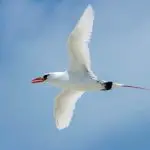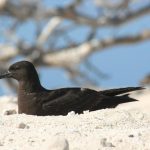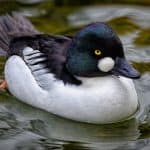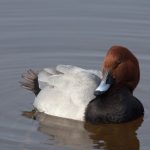Common Name: Pacific Golden Plover
Scientific Name: Pluvialis fulva| Size | Diet | Range in Hawaii | Status in Hawaii |
|---|---|---|---|
| 9.5 in. - 10.5 in. | insects, worms, spiders, crustaceans, and small mollusks | Common on all islands | Least Concern |
The Pacific Golden Plover (Pluvialis fulva) is a migratory shorebird that is known for its striking appearance and impressive long-distance flights. With its golden plumage and distinctive black and white markings, this medium-sized bird is a true marvel of nature. While it is commonly found in Asia and the Pacific, it has also been known to make appearances in other parts of the world, including Hawaii.
In fact, the Pacific Golden Plover is a common winter visitor to Hawaii, where it can be spotted on beaches and in coastal areas. In this article, we’ll take a closer look at this fascinating bird species, including its physical characteristics, behavior, and habitat preferences, as well as its presence in Hawaii.
Pacific Golden Plover
Appearance
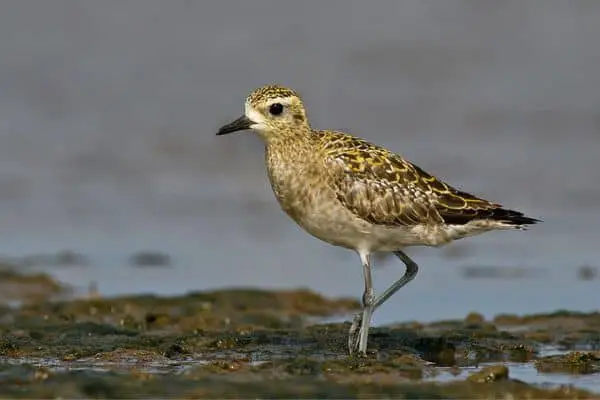
The Pacific Golden Plover is a migratory bird with a striking appearance. It has a medium-sized body, measuring approximately 9.5-10.5 inches (24-27 cm) in length. This species showcases beautiful plumage, featuring a mix of golden-brown, black, and white feathers.
During the breeding season, the male develops a black face and throat, while the female displays more muted colors. These features make the Pacific Golden Plover an eye-catching bird in its natural habitat.
Diet
The Pacific Golden Plover has a diverse and adaptable diet. As a shorebird, it primarily feeds on a variety of invertebrates found in its habitat. This includes insects, worms, spiders, crustaceans, and small mollusks.
During its migration and breeding periods, the Pacific Golden Plover also consumes plant material such as berries and seeds. With its sharp bill and probing behavior, this species is skilled at foraging for its food in both terrestrial and coastal environments.
Nesting
The Pacific Golden Plover nests in the Arctic tundra regions of North America and northeastern Asia. They are ground-nesting birds that build their nests in shallow depressions on the open tundra. The female typically constructs the nest, which is a simple scrape lined with a few twigs, grass, or leaves.
These nests are often well-camouflaged among the vegetation to provide protection from predators and harsh weather conditions. Pacific Golden Plovers are known for their solitary nesting behavior, with each pair establishing and defending its own territory.
Once the eggs are laid, both the male and female take turns incubating them for about 26-27 days until they hatch. After the chicks hatch, they are precocial and able to leave the nest shortly after birth, relying on their parents for protection and guidance.
Behavior
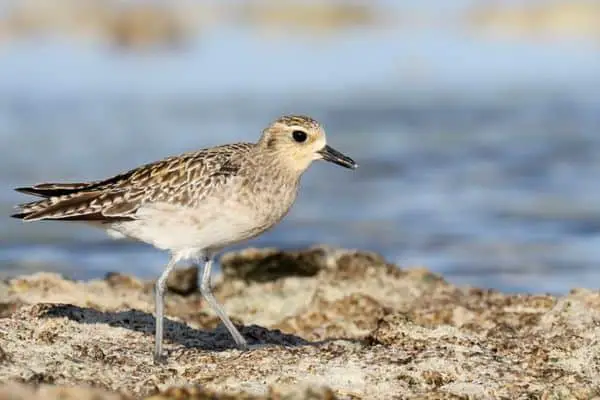
The Pacific Golden Plover exhibits fascinating behaviors throughout its annual cycle. This migratory bird is known for its long-distance journeys, traveling between its breeding grounds in the Arctic tundra and its wintering areas in Hawaii, the Pacific Islands, and parts of Asia.
During the breeding season, the Pacific Golden Plover engages in courtship displays to attract a mate. These displays include aerial flights, wing displays, and vocalizations. Once paired, the birds establish and defend their nesting territories, showing aggression towards intruders.
In terms of foraging behavior, the Pacific Golden Plover is a skilled and opportunistic feeder. It probes the ground with its bill, searching for insects, worms, and other small invertebrates. It also takes advantage of coastal areas, feeding on crustaceans, mollusks, and other marine organisms.
During migration, the Pacific Golden Plover forms large flocks, sometimes numbering in the thousands. They undertake impressive non-stop flights over vast distances, using celestial cues and environmental factors to navigate their way.
Interestingly, the Pacific Golden Plover is known for its ability to undergo “supercompensation” during migration. This means that it can rapidly replenish its fat reserves at stopover sites, allowing it to continue its journey with renewed energy.
Habitat
The Pacific Golden Plover occupies a diverse range of habitats throughout its annual cycle. During the breeding season, it nests in the Arctic tundra regions of North America and northeastern Asia. These areas consist of expansive open tundra with low-lying vegetation, often near wetlands or coastal areas.
During migration, the Pacific Golden Plover utilizes a variety of habitats along its flyways. It can be found in coastal areas, including sandy beaches, mudflats, estuaries, and saltmarshes. It also frequents inland areas such as grasslands, agricultural fields, and even urban parks or golf courses.
In the wintering months, the Pacific Golden Plover primarily occupies tropical and subtropical regions. It is commonly found in coastal habitats, including beaches, salt pans, mangroves, and coastal wetlands. Hawaii and other Pacific Islands serve as important wintering grounds for this species.
Range
The Pacific Golden Plover has a notable presence in Hawaii during its wintering season. It is considered a regular visitor and can be observed across the islands. The species is known to frequent a variety of habitats in Hawaii, including coastal areas, wetlands, grasslands, and even golf courses.
Conservation Status
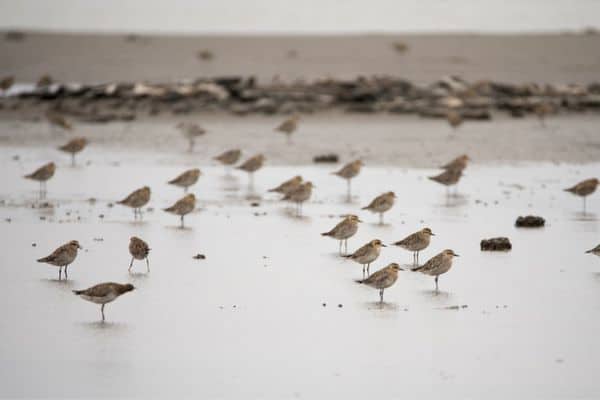
The conservation status of the Pacific Golden Plover is currently categorized as Least Concern. According to the International Union for Conservation of Nature (IUCN), this species has a wide distribution range, with a stable population trend. While there may be localized threats and pressures on specific populations, overall, the Pacific Golden Plover does not meet the criteria for being considered at significant risk of extinction.
The Pacific Golden Plover benefits from its ability to adapt to various habitats and its extensive migratory range. It utilizes protected areas and coastal habitats during its annual cycle, which helps ensure its survival and reproductive success. However, like many bird species, it may still face threats such as habitat loss, degradation of stopover sites, and disturbance from human activities.
Interesting Facts
1. Impressive migration
The Pacific Golden Plover undertakes impressive long-distance migrations, traveling thousands of kilometers each year between its breeding grounds in the Arctic and its wintering grounds in Hawaii and other Pacific Islands.
2. Solitary nesters
While they may share breeding grounds with other Pacific Golden Plovers, each pair establishes and defends its own nesting territory. They display aggression towards intruders to protect their nests and young.
3. Supercompensation
During migration, the Pacific Golden Plover has the ability to rapidly increase its fat reserves at stopover sites, a behavior known as “supercompensation.” This allows the bird to replenish its energy stores and continue its long journey.
4. Camouflaged nests
The Pacific Golden Plover constructs its nest as a simple scrape on the ground, lined with a few twigs, grass, or leaves. The nest is often well-camouflaged among the tundra vegetation, providing protection from predators.
Frequently Asked Questions
1. Does the Pacific Golden Plover breed in Hawaii?
No, the Pacific Golden Plover breeds in the Arctic tundra regions of North America and northeastern Asia, but it can be observed in Hawaii during its wintering season.
2. How long do Pacific Golden Plovers live?
Pacific Golden Plovers have an average lifespan of around 7 to 10 years in the wild.
3. How do Pacific Golden Plovers communicate with each other?
Pacific Golden Plovers communicate through various vocalizations, including soft whistles, trills, and alarm calls. These vocalizations are used for territorial defense, pair bonding, and communication between individuals within a flock.
4. Are Pacific Golden Plovers monogamous?
Yes, Pacific Golden Plovers are generally monogamous during the breeding season. Mated pairs form strong bonds and work together to defend their nesting territory and raise their offspring.

